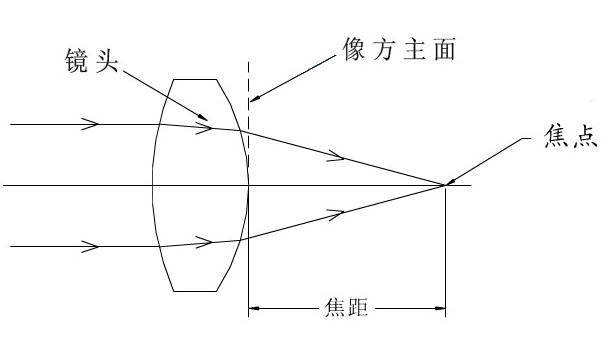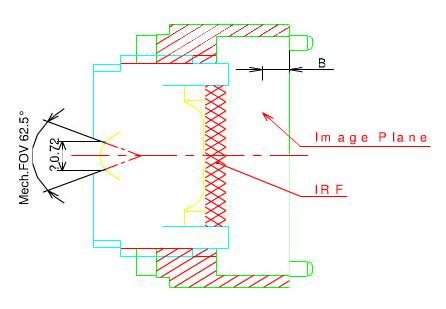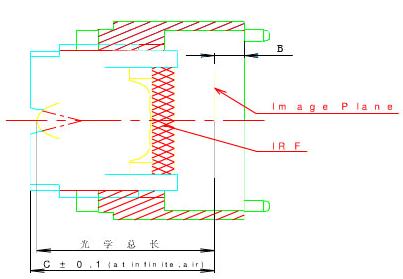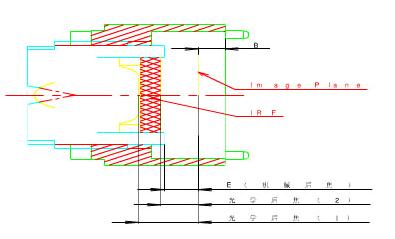1, the focal length (Focal Length or EFFL)
2, aperture (F / NO)
3, FOV (FOV)
4, the total length of the lens and optical total length
5, after mechanical back focus (MBF) and optical focal
6, optical distortion (Opt distortion) and TV distortion (TV distortion)
7, relative illumination (Relative illumination)
Focus:
Refers to an optical system from the image-side focal distance between the main surface to which reflects the ability of an optical system for focusing an object. (Diagram below)

Aperture (F / NO)
An imaging optical system, brightness index, generally referred to the F-number (such as the conventional camera identification), at the same intensity of the irradiation light, the smaller the value, the brighter the image plane, the greater the value, the darker the image plane, the imaging optical system, in general, F2.8-3.2 will be suitable, if desired the smaller the F number, the more difficult the design of more complex structure, the manufacturing cost is higher.
Field of view (FOV)
An optical imaging system can angular range, the angle is larger, the optical system is, the wider the range of the anti-energy imaging, whereas the more narrow, which in the actual product, but also the optical and mechanical FOV FOV points, the optical means FOV SENSOR or film that can be truly effective FOV imaging range is generally greater than the mechanical optical FOV FOV, consider that there are other and uses, for example, the need to reference the mechanical design Module or FOV of light through the diameter of the cell phone cover Princess. (Diagram below)

Total length and total length of optical lens (TTL)
The optical overall length is measured from the first surface of the lens system to the distance from the image plane, and the total length of the lens means that the front end surface (the surface generally refers Barrel) to the image plane (e.g., the surface of Sensor) distance, in general, the lens is too long or its design is too short design will become difficult, demanding time of manufacture process.
(Diagram below)

Mechanical back focus (MBF) and Optical back focal
Mechanical means such as the back focal distance from the lens surface of the rear end of the machine, and is measured from the optical focus lens as the distance from the last lens surface to the last time, the difference between both of them varies with different optical systems are different, Meanwhile in the optical industry for the optical focus, there are two express joint photoelectric current focus a description of the use of optics. (Diagram below)

Optical distortion (Opt distortion) and TV distortion (TV distortion)
Distortion refers to the optical system to form the image of an object relative to the object itself, the degree of distortion, optical distortion refers to the optical theoretically obtained Varying degrees, TV distortion refers to the degree of distortion of the actual image is captured, DC the camera is a modified standard at the short side of the measurement chip (Sensor), optical distortion is not equal in general TV distortion, especially in the chips, having a correction capability.
In contrast to the high (Relative illumination also abbreviated as RI)
It refers to a ratio of the imaging optical system at the luminance of the central region with respect to the brightness at the edge, no units, the actual measurement result, the same optical system which is not only itself, but also with the photosensitive sheet (SENSOR0) on the used, the same lens could be used for different chips in different measurements.
About the lens brightness uniformity: From Theory optical design perspective, lens peripheral illumination relative to the center there will be a decline in the general requirements of the optical design should reach more than 50%.